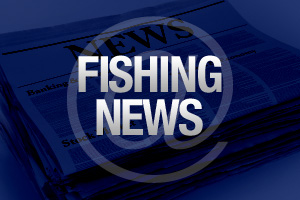Fish Health Inspectors (FHI) from the Centre for Environment, Fisheries & Aquaculture Science (Cefas) have reported to the authorities two men for attempting to illegally import sturgeon into the UK without the required fish health certification.
Ten boxes containing more than 140 Diamond sturgeon (Acipenser gueldenstaedtii) were seized on Monday, 11 June, as a result of a surveillance operation. The men were observed unloading the boxes from a delivery vehicle to a waiting van at a car park near Ashford, Kent.
The fish were 7–22g in weight and between 11 and 18cm in length. They were taken to Cefas’ laboratory in Weymouth, Dorset, to be photographed and measured as evidence. The fish were subsequently humanely slaughtered.
It is believed that the fish originally came from a fish farm in the Czech Republic and were transported from the Continent via the Channel Tunnel.
A FHI enforcement officer commented: “Many responsible fish farmers follow the rules for the legal importation of non-native fish to the UK. Although fish smuggling has been significantly reduced in recent years, there is still a very small minority of individuals who are prepared to take risks.”
This is the latest in a series of successful interceptions of live fish in recent years. The men have been reported to the authorities for not having the necessary health certification for importing live fish into the UK.
1. Cefas is an internationally renowned scientific research and advisory establishment, based at Lowestoft since 1902. It also has laboratories at Burnham-on-Crouch and Weymouth, and a number of other facilities around the UK. It became an executive agency of the Department for Environment, Food and Rural Affairs (Defra) in 1997.
2. The Fish Health Inspectorate (FHI), based at Cefas’ Weymouth laboratory, is dedicated to maintaining and improving fish and shellfish health in England and Wales. Its primary role is to act for Defra and the National Assembly for Wales, Agriculture Department (NAWAD) in undertaking statutory and inspection duties resulting from the EU Fish Health regime and other national legislation in the area of fish and shellfish health.
3. The Inspectorate is also responsible for health certification of fish and shellfish movements from other countries and runs an enforcement programme aimed at preventing the illegal importation of these animals. For more about movement controls and enforcement visit www.cefas.co.uk/fhi/movements.htm.
4. The sturgeon is a group of animals that have changed little since dinosaurs roamed the earth. The Diamond sturgeon is originally from the Black and Caspian Sea regions. Along with other sturgeon species, it has become a popular ornamental fish kept in aquariums and garden ponds. The Diamond sturgeon gained its name from the characteristic diamond-shaped bony plates down the flanks of the fish. This species is capable of growing up to 4m in length and 150kg in weight. For more about sturgeon visit www.fishbase.org.







